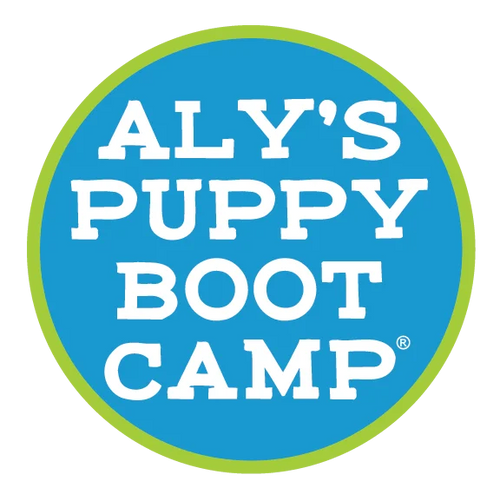Does Your Dog Have What it Takes to be Working Dog?
What Traits Make a Good Working Dog
How do you know if your pup has what it takes to be a working dog? How do you cultivate it in a puppy?
When people think of a service dog they often think of a completely obedient dog that does everything an owner asks of it anytime the owner asks it. The catch is, a service dog often can’t be or shouldn’t be asked to do their task…the dog has to recognize there is a need for their human and fill it. For example, a diabetic alert dog would not be very good if it only alerted to a change in blood sugar if the owner told them, “my blood sugar level is changing, alert me now.”

Qualities of a Working Dog
Obedience to a command is not the FIRST thing you want or need when searching for or training or cultivating a working dog. Certainly, obedience is important, as well as social manners, leash manners, and public access behaviors must be impeccable for sure. However, it is NOT the most essential thing for a service or support animal. These dogs must have an uncanny ability to read their human. These dogs must love the job they do and be willing to do it over and over. They must sense their human’s need before their human even does, and certainly be able to react in a prescribed way that helps their human when needed. It’s truly an art to discover what puppy or dog is a good candidate for a job. Then, it’s another art to match the right dog to the right person. And yet another art to actually train the dog to do the task for their human when needed. And yet another art to train the human involved with their dog!
I assess litters every single month. I’ve seen thousands of puppies, and out of all those litters and all those puppies, there are the handpicked few that have that special something that could grow into a working dog.
What are the qualities I am looking for in a puppy or dog that may be a contender for service or therapeutic work?
Recognizing a Working Dog: Meet Roxy
Before I answer this question I’d like to share the story of Roxy, a very special puppy that just stood out in the crowd of puppies. I visited the litter several times from birth and just watched from afar. I watched how the pups played. I watched who was the bossy one, the noisey one, the jumping one, the whiney one, the self-contented one. I watched them with momma. Then it was PUPPY ASSESSMENT DAY. This is when I would interact with the pups. Pup after pup they came into the assessment ring. This one puppy noticed me when I walked in, right away! She didn’t come barging up to me, jumping on me. She watched for a few beats, then walked up to me and immediately sat down and looked at me. I mean really looked at me….like into my soul. I ran through a series of tests in the Volhard Aptitude test. I used planted treats to see if she noticed them. I set a metal spoon down and a ball of foil to see if she would be interested. I popped an umbrella up to see how she responded to this new sight. I dropped a metal bowl to see how much the pup would startle and how quickly the puppy would rebound to this startling noise. In the case of Roxy, this special girl was calm, confident, willing to touch things, smelled and found the food, not flustered by anything and was keenly aware of me, in a way that said, “I like you and you seem rather nice.” She had eye contact. She was enthusiastic without being too much. She interacted with me, in her puppylike way. She liked using her paws to touch me when we hung out. She was special. I just knew it. Roxy grew up and was matched with a little girl that had a tick where she would pick her hands until they bleed. We taught Roxy how to use her paw to touch and interrupt the picking. We absolutely cultivated this pup’s natural desires.
Training a Working Dog
When I have a pup that seems to want to do something specific like nudge or use their paws or carry things or smell you in a focused way, I say YES, let’s do more of that!!! We shape behaviors we desire. We encourage trying things. We reward that behavior, ALWAYS! I NEVER correct the dog for the behavior that I might need in the future, even when the dog offers the skill at the wrong time. For example, if a dog really likes to lean into me that is a potential TOUCH or DEEP PRESSURE skill that I’m cultivating here. If you correct this behavior early on, you could squash her willingness to want to lean into you and provide touch. I do teach my pups how to be respectful of space and how to eventually differentiate when they should or should not be doing a certain skill. But early on, you need to grow the desire! You shape what you want. You let pups experience a variety of surfaces, textures, sights and sounds. You grow their interest and awareness of things around you. You encourage them to be thinking and solving problems. If I’m walking along and a puppy goes on one side of a pole and I’m on the other, and the pup gets stuck, I do not pick the pup up and unwind the leash. I wait. I let that puppy figure out how to get around the pole to get back to me and get unstuck. And what a party when that puppy figures that out! I don’t solve every problem for the pup. We play games where my pup grows their confidence.. You never want the commitment & obedience to a command to override her desire to work at the given task. I know it’s a fine line, but it’s one that we must walk and give it the time it needs. We NEVER correct her for her enthusiasm. We merely channel it. I love the way dog trainer Maryna Ozuna says that our dogs must be trained for “intelligent disobedience”. Picture this, you have your dog in command, DOWN/STAY. You begin to have a panic attack. It is essential that your dog will break his DOWN/STAY command and immediately come to your assistance with the medicine you may need and the needed deep pressure therapy that helps you navigate your way through the attack. Yes, only special pups are made for this, but only correct foundation work will allow that pup to fully develop with the more advanced skills needed that will help change the life of his human.



